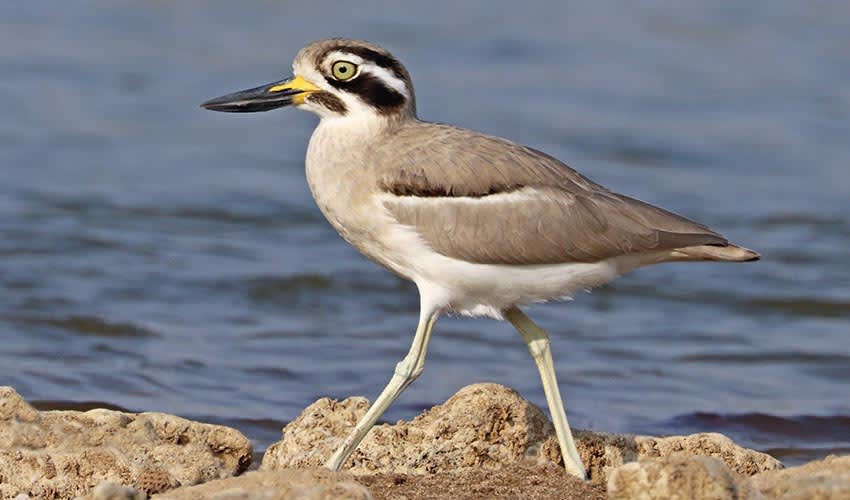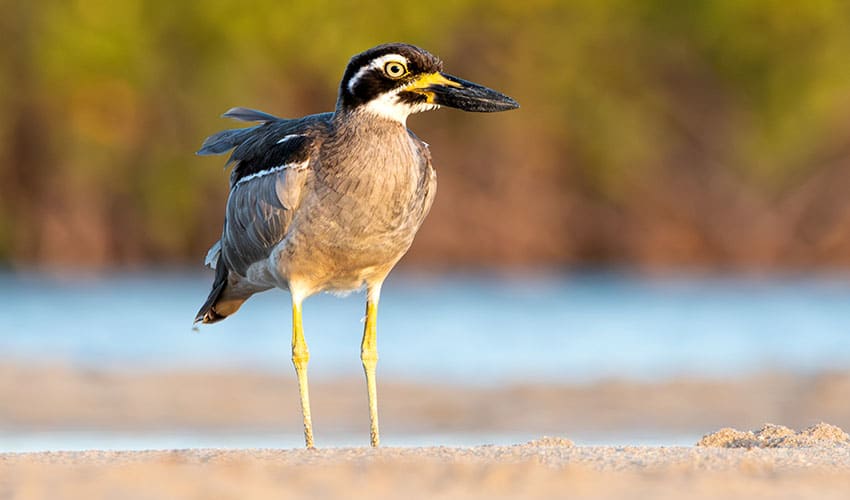Esacus
The crab-cracking night watchmen of the beach
A small but fascinating group of wading birds that are found in coastal and riverine habitats across South and Southeast Asia, Australia, and nearby islands. Unlike most shorebirds that gather in large flocks and bustle noisily along beaches, Esacus species have a reputation for being quiet, solitary, and extremely well-camouflaged. Their name “thick-knee” comes from their stout-looking leg joints, which add to their somewhat comical but endearing appearance.
One of the most striking features of Esacus birds is their large, yellow eyes. These give them a permanently wide-eyed, almost startled look, but more importantly, they are perfect for night vision. Unlike many shorebirds that are active during the day, Esacus species are mainly nocturnal hunters, preferring to forage at dusk or under moonlight. They feed on crabs, mollusks, insects, and other small creatures they find along beaches, mudflats, and riverbanks, using their sturdy bills to crack open shells or dig into the sand. Their nocturnal habits, paired with their sandy-brown, streaky plumage, make them blend seamlessly into their surroundings during the day, when they often sit still and invisible among rocks or driftwood.
There are only two recognized species in this genus—the Great stone-curlew (Esacus recurvirostris) and the Beach stone-curlew (Esacus magnirostris)—but both stand out among shorebirds for their size and behavior. These birds are quite large, with long legs and heavy bills, giving them a more imposing presence than other waders. They are also much quieter and more solitary, usually seen alone or in pairs rather than in bustling groups.
Species in this genus
Beach stone-curlew
Nocturnal crab-cracker, master of camouflage, and solitary guardian of the beach


